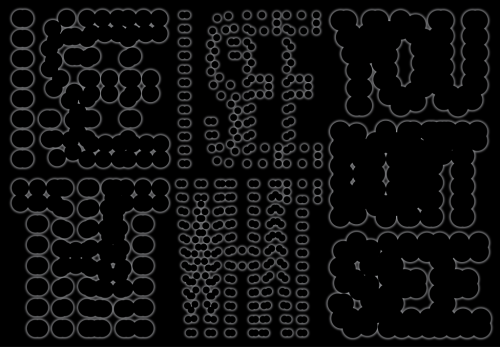Group Exhibition
05.10–29.12.2019: Het Nieuwe Instituut, Rotterdam, NL
Het Nieuwe Instituut presents I See That I See What You Don’t See, the official Dutch contribution to the XXII Triennale di Milano. On show in Rotterdam from 5 October 2019 (official opening 12 October at 19:00).
The Netherlands is one of the most illuminated countries on the globe. Its productive landscape – dependent on data, technology and energy – illustrates a 24 hour economy that emphasises efficiency and growth. At the same time, this Cartesian territory reflects the changing relationship with the natural rhythms connected to, and affected by the cycles of light and darkness. In a world that is always switched on, the traditional dichotomy between day and night no longer seems relevant in terms of productivity, while the experience of clear, starry skies has become a rarity. The Dutch contribution to the XXII Triennale di Milano comprises a programme of events in both Milan and Rotterdam, and a publication. It takes the complex relationships between light and dark, between seeing and not seeing, as a starting point for an exploration of their conflicting effects on humans, the Earth and other organisms.
Design as a Destructive as well as Restorative Endeavour
The hyperconnected and controlled environment, in which the borders between nature, ecology, technology and culture are becoming increasingly diffuse, is the result of persistent acts of design. By questioning the overarching yet invisible presence of this environment, the Dutch contribution to the XXII Triennale di Milano speculates on design as both problem and solution, as a destructive as well as restorative endeavour. I See That I See What You Don’t See responds to the general theme Broken Nature: Design Takes on Human Survival. Designers, artists and researchers from the Netherlands and further afield present a layered picture of the current multispecies relationship with darkness, setting in motion imaginative critical responses to it. The research, films, performances, sound and scent-scapes together form a viewing mechanism that evidences how current modes of understanding the environment are designed, and how they could therefore be redesigned.
In this context, the relation between the possibility of seeing and forms of oppression and emancipation becomes relevant. Yet here the exercise of looking, seeing and revealing what generally remains concealed purposely avoids the metaphor of light as wisdom and knowledge. Rather, the project aims for an understanding of the contrasting effects of light access, deprivation and overexposure on different bodies; the influence of radiation on human and non-human behaviours; the impact of the maximisation of the land through lighting technologies for year-long crops and floriculture production; the coexistence with the invisible yet pervasive architecture of the digital; the perception of instances of synchronicity with the cosmos; and the role of design in these realms.
Critical Practice
Through projects that establish crossovers between design and biology, forensic science, cosmology, or activism, and venturing beyond the traditional notion of product, the Dutch presentation aims to challenge the dominance of the market, as well as hegemonic powers, in the design discipline and practice. By sharpening our perception, which tends to be affected by the condition of permanent performance, the contributions are also a catalyst for a form of political, cultural and ethical restorative design. Design is, therefore, positioned as a critical practice that problematises conventional ways of inhabiting and experiencing the world founded on human control and exploitation of other bodies. Designers could operate in domains that demand their capacity to make translations, raise awareness, visualise challenges and inequalities as well as not-yet-recognised collective common good, to open spaces for transgression. These are the recurring pursuits of the research initiatives launched by Het Nieuwe Instituut in such fields as automation, materials, and datafication.
I See That I See What You Don’t See is curated by: Angela Rui, design curator and researcher; Marina Otero Verzier, director of Research at Het Nieuwe Instituut and Francien van Westrenen, head of Agency at Het Nieuwe Instituut.
